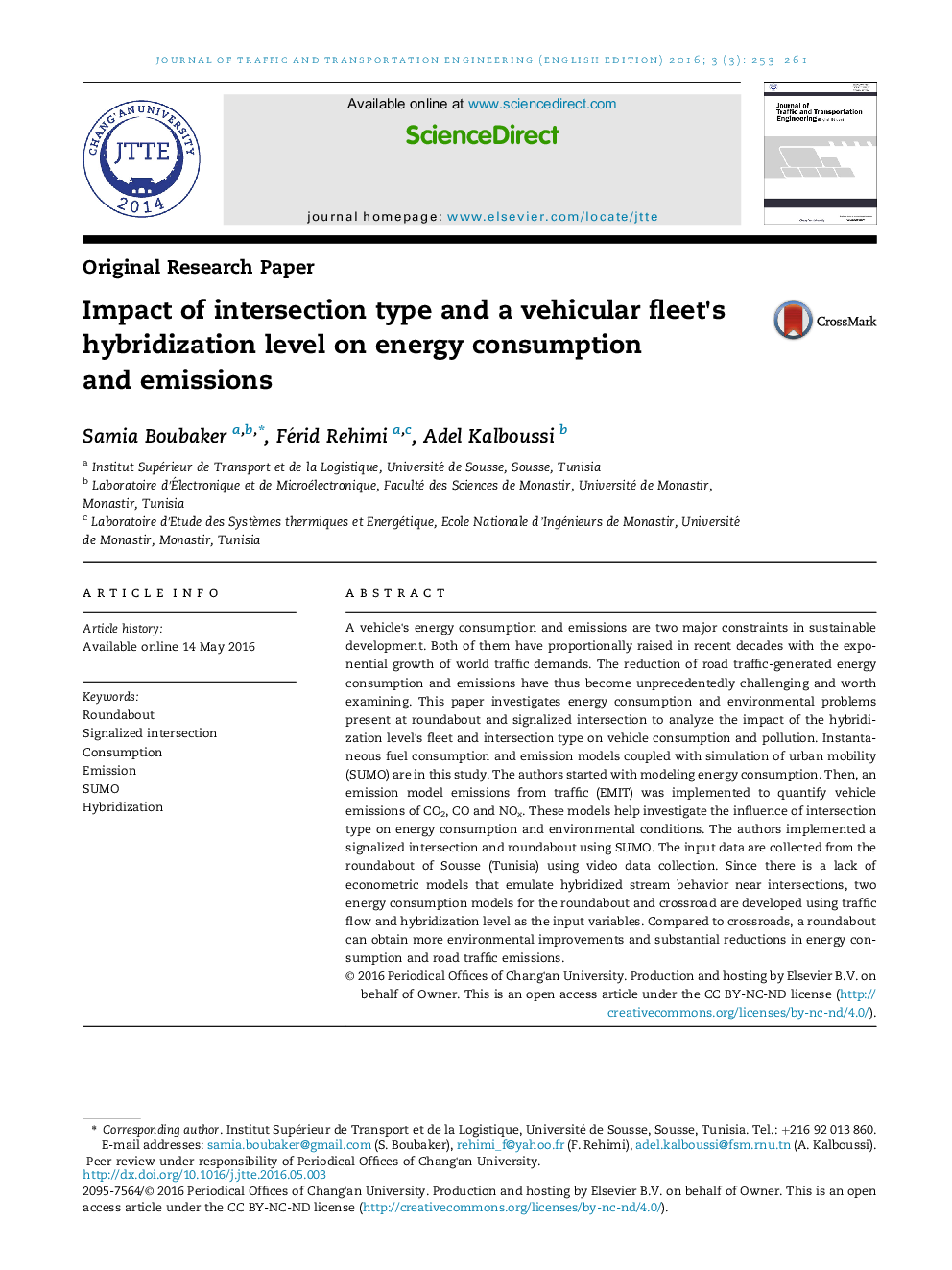| Article ID | Journal | Published Year | Pages | File Type |
|---|---|---|---|---|
| 292747 | Journal of Traffic and Transportation Engineering (English Edition) | 2016 | 9 Pages |
A vehicle's energy consumption and emissions are two major constraints in sustainable development. Both of them have proportionally raised in recent decades with the exponential growth of world traffic demands. The reduction of road traffic-generated energy consumption and emissions have thus become unprecedentedly challenging and worth examining. This paper investigates energy consumption and environmental problems present at roundabout and signalized intersection to analyze the impact of the hybridization level's fleet and intersection type on vehicle consumption and pollution. Instantaneous fuel consumption and emission models coupled with simulation of urban mobility (SUMO) are in this study. The authors started with modeling energy consumption. Then, an emission model emissions from traffic (EMIT) was implemented to quantify vehicle emissions of CO2, CO and NOx. These models help investigate the influence of intersection type on energy consumption and environmental conditions. The authors implemented a signalized intersection and roundabout using SUMO. The input data are collected from the roundabout of Sousse (Tunisia) using video data collection. Since there is a lack of econometric models that emulate hybridized stream behavior near intersections, two energy consumption models for the roundabout and crossroad are developed using traffic flow and hybridization level as the input variables. Compared to crossroads, a roundabout can obtain more environmental improvements and substantial reductions in energy consumption and road traffic emissions.
